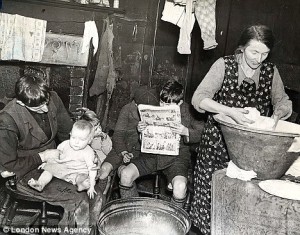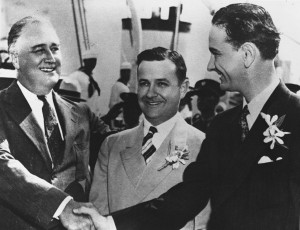“Forty families on one lot, using one water faucet. Living in barren one room huts, they were deprived of the glory of sunshine in the daytime, and were so poor they could not even at night use the electricity that is to be generated by our great river…
“I found one family that might almost be called typical. Living within one dreary room, where no single window let in the beneficent sunlight, and where not even the smallest vagrant breeze brought them relief in the hot summer – here they slept, here they cooked and ate, here they washed themselves in a leaky tin tub after carrying the water for 100 yards. Here they brought up their children ill-nourished and amid sordid surroundings…”
The speaker was Congressman Lyndon B. Johnson, in his home district of Austin, describing the “slum tarnish” he observed during a Christmas Day walk through town. He made his remarks in a radio address to his constituents (this was well before LBJ himself got into the radio business), hoping to win their support for something new in town: public housing. The address became known as his “Tarnish” speech.
Here’s a photo (albeit not from Texas) that seems to capture what he was talking about:
Thirty years before he orchestrated the passage of the Fair Housing Act as president, Johnson – whose ambition as a young congressman is captured by this 1937 photo of him shortly after his election, with FDR in Galveston – prevailed in that housing campaign.
The first public housing in the country built under the 1937 housing act was in Austin. It was segregated, like most public housing that sprang up around the country over the next few decades, but less sordid than what they replaced. LBJ used that word – sordid – to good effect at HUD’s inauguration, when he declared: “Our cities and our new urban age must not be symbols of a sordid society.”
“Sordid” might be an apt description for some blocks of big-city, high-rise public housing, thoroughly segregated, underfunded and bereft of hope, if not sunlight. High rises came into planners’ favor in the ‘40s, but a couple of decades later they were not. For a tidy history of public housing, click here.
Some argue that public housing outside the big inner cities has worked quite well, and perhaps that can be said for places like Vermont, which apparently got into public housing fairly late in the game. (Burlington’s housing authority dates from 1961, and the state’s, from 1968.) If a history of Vermont’s public housing hasn’t been written, it’s a thesis topic in waiting.

